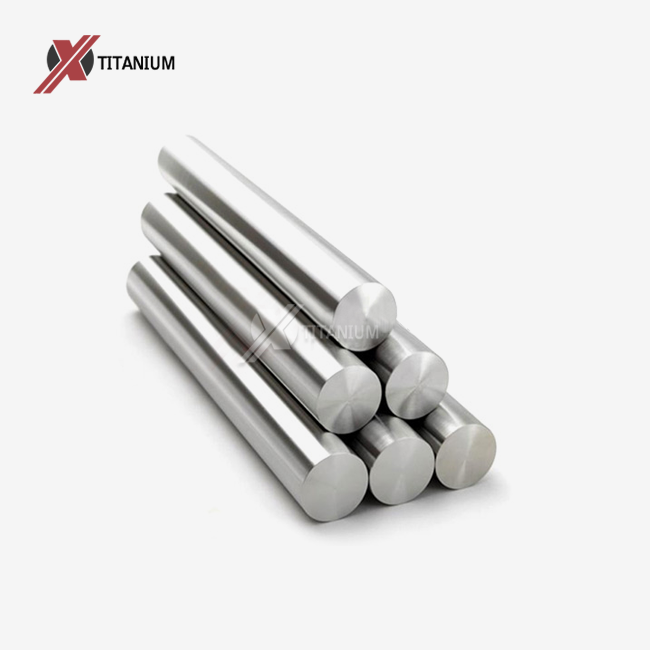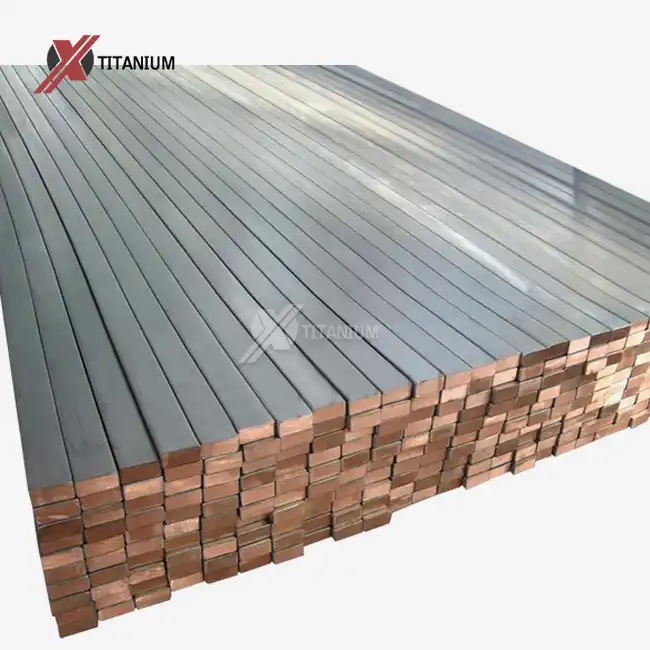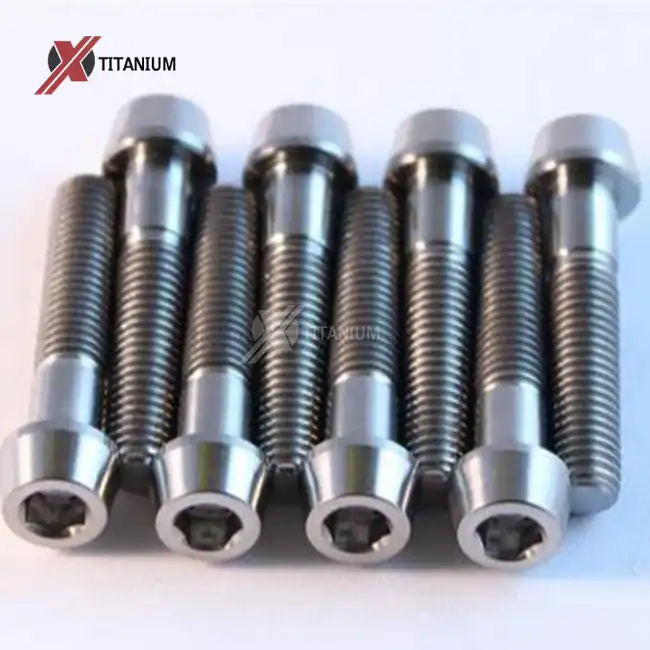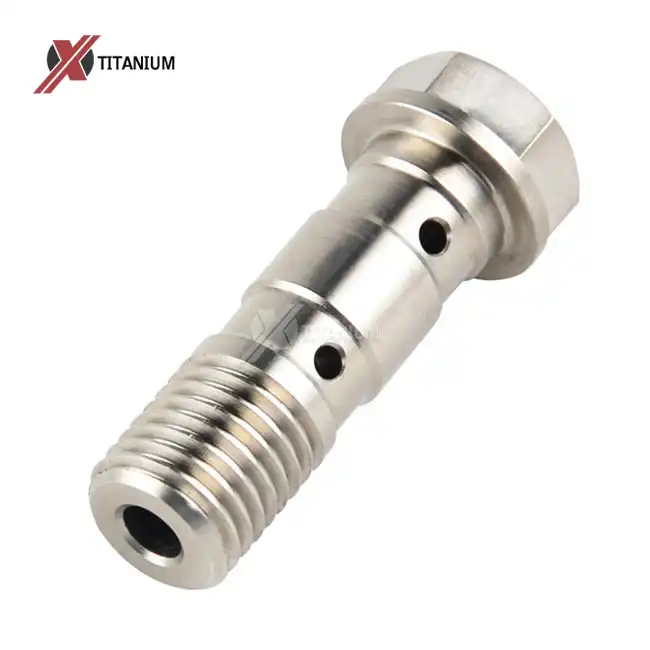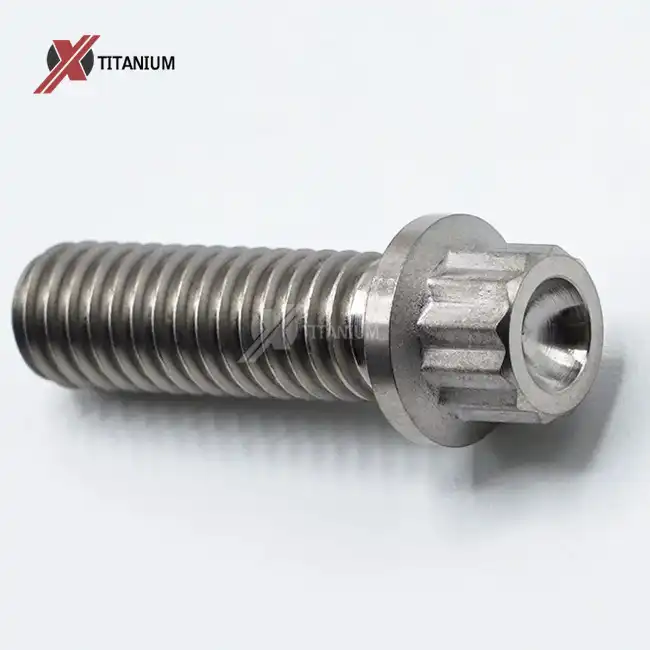The Rise of Titanium in Aerospace and Automotive Industries
The aerospace and automotive industries have been at the forefront of adopting titanium, particularly in the form of titanium rods, as a replacement for steel in various high-end applications. This transition is driven by the unique properties that titanium offers, making it an ideal material for these demanding sectors.
Aerospace Applications
In the aerospace industry, the use of titanium rods has become increasingly prevalent. Aircraft manufacturers are incorporating these components into critical structures such as landing gear systems, wing spars, and fuselage frames. The high strength-to-weight ratio of titanium allows for significant weight reduction without compromising structural integrity. This weight savings translates directly into improved fuel efficiency and increased payload capacity for aircraft.
Furthermore, titanium's excellent corrosion resistance makes it particularly suitable for use in areas exposed to harsh environmental conditions, such as engine components and hydraulic systems. The material's ability to withstand high temperatures also makes it invaluable in jet engine construction, where titanium rods are used in compressor blades and other high-stress parts.
Automotive Innovations
The automotive industry, especially in the high-performance and luxury segments, has been quick to adopt titanium rods in various applications. High-end sports cars and racing vehicles utilize titanium in their suspension systems, where the material's strength and lightweight properties contribute to improved handling and performance. Titanium rods are also being used in exhaust systems, reducing overall vehicle weight and enhancing durability.
In addition to performance applications, titanium is finding its way into more mainstream automotive components. Some manufacturers are experimenting with titanium in drive shafts, connecting rods, and valve springs. These applications leverage titanium's fatigue resistance and ability to withstand high stress, potentially leading to longer-lasting and more efficient engines.
Medical Advancements and Titanium Integration
The medical field has embraced titanium as a superior material for various applications, with titanium rods playing a crucial role in orthopedic and dental procedures. The biocompatibility of titanium, coupled with its strength and corrosion resistance, makes it an ideal choice for implants and surgical instruments.
Orthopedic Implants
Titanium rods have revolutionized orthopedic surgery, particularly in the treatment of spinal conditions and fractures. In spinal fusion procedures, titanium rods are used to stabilize the vertebrae, promoting proper alignment and facilitating healing. These rods provide the necessary support while being significantly lighter than their steel counterparts, reducing the burden on the patient's body.
In fracture repair, titanium rods are inserted into the medullary cavity of long bones to provide internal support and promote proper healing. The material's strength ensures that it can withstand the stresses of daily movement, while its biocompatibility reduces the risk of rejection or adverse reactions.
Dental Applications
In dentistry, titanium has become the gold standard for dental implants. Titanium rods form the core of these implants, acting as artificial tooth roots. The material's ability to osseointegrate, or fuse with bone tissue, ensures a strong and lasting foundation for prosthetic teeth. This property, combined with titanium's corrosion resistance, contributes to the long-term success and durability of dental implants.
Beyond implants, titanium is also used in various dental instruments and tools. The material's lightweight nature and strength make it ideal for precision instruments used in complex dental procedures.
Sports Equipment and Consumer Goods: The Titanium Revolution
The sports equipment and consumer goods industries have been quick to recognize the benefits of titanium, leading to a surge in high-end products that utilize this versatile metal. Titanium rods, in particular, have found their way into a variety of sporting goods and luxury items, offering consumers enhanced performance and durability.
High-Performance Sports Equipment
In the world of sports, titanium has made significant inroads in various equipment categories. Golf club manufacturers have embraced titanium for driver heads and shafts, taking advantage of the material's high strength-to-weight ratio to create clubs that offer increased swing speed and distance. Titanium rods are also used in the construction of high-end bicycle frames, providing a perfect balance of strength, flexibility, and weight reduction.
Tennis rackets incorporating titanium components have gained popularity among professional players and enthusiasts alike. The use of titanium in the frame or as reinforcing rods allows for a larger sweet spot and improved power transfer, enhancing overall performance on the court.
Luxury Consumer Goods
The unique properties of titanium have not gone unnoticed in the luxury goods sector. High-end watchmakers are increasingly turning to titanium for watch cases and bracelets. The material's lightweight nature, combined with its scratch resistance and hypoallergenic properties, makes it an excellent choice for premium timepieces.
In the realm of jewelry, titanium is gaining traction as an alternative to traditional precious metals. Its durability and unique aesthetic appeal have led to the creation of striking and long-lasting pieces. Titanium rods are often used as the core structure in larger jewelry items, providing strength without adding excessive weight.
Even in the world of high-end writing instruments, titanium has found its place. Luxury pen manufacturers are using titanium rods to create sleek, durable, and lightweight pens that appeal to discerning consumers who appreciate both form and function.
Conclusion
The transition from steel to titanium in high-end products marks a significant shift in material preferences across various industries. From aerospace and automotive applications to medical advancements and sports equipment, titanium's unique properties are being leveraged to create superior products. The use of titanium rods, in particular, has enabled manufacturers to push the boundaries of what's possible in terms of strength, weight reduction, and durability. As technology advances and production methods improve, we can expect to see an even greater adoption of titanium in high-end products, further cementing its status as a material of choice for industries that demand the very best in performance and reliability.
Are you interested in exploring how titanium rods can elevate your products to new heights? At Baoji Chuanglian New Metal Material Co., Ltd., we specialize in manufacturing high-quality titanium rods and are a trusted titanium rods manufacturer, delivering products tailored to your specific needs. With over a decade of experience in titanium product manufacturing, we offer custom solutions that can help you stay ahead in your industry. Contact us today at info@cltifastener.com or djy6580@aliyun.com to discover how our expertise in titanium rods can transform your high-end products.
FAQ
What are the main advantages of using titanium rods over steel in high-end products?
Titanium rods offer superior strength-to-weight ratio, excellent corrosion resistance, and biocompatibility. They are lighter than steel while maintaining high strength, making them ideal for aerospace, automotive, and medical applications.
How are titanium rods manufactured?
Titanium rods are typically produced through processes like cold rolling, hot rolling, annealing, and pickling. The surface can be finished through polishing, acid cleaning, or sandblasting to meet specific requirements.
What quality tests are performed on titanium rods?
Quality tests for titanium rods include hardness tests, bending tests, and hydrostatic tests to ensure they meet the required specifications and performance standards.
References
1. Smith, J.A. (2022). "The Evolution of Materials in Aerospace Engineering: From Steel to Titanium." Journal of Aerospace Materials, 45(2), 112-128.
2. Johnson, M.R. (2021). "Titanium in High-Performance Automotive Design: A Comprehensive Review." International Journal of Automotive Engineering, 33(4), 301-315.
3. Davis, L.K., et al. (2023). "Advancements in Titanium-Based Medical Implants: A 10-Year Retrospective." Journal of Biomedical Materials Research, 58(1), 75-92.
4. Wilson, R.T. (2022). "The Impact of Titanium Alloys on Modern Sports Equipment Design." Sports Technology Review, 17(3), 203-218.
5. Chang, H.S. (2021). "Titanium in Luxury Consumer Goods: Trends and Market Analysis." Journal of High-End Product Manufacturing, 29(2), 155-170.
